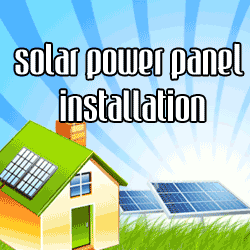

Sustainable design, also known as "environmental design" is a philosophy that promotes the design of physical objects and services that meet the definition of social, economic and ecological sustainability. Sustainable architecture, therefore, is a sub-philosophy of sustainable design that deals specifically with architecture and all that goes into it from emergency lighting in commercial buildings to sun rooms in private residences. Seeking to minimize the negative environmental effects of architecture by using environmentally friendly building materials, limiting development space and dramatically increasing energy efficiency, sustainable architecture espouses the same goal as the more general philosophy of sustainable design: the preservation of the environment and everything therein for the proper use and enjoyment future generations.
Constructing a building that maintains emergency efficiency over the course of its lifetime is the primary goal of sustainable architecture. Energy efficiency begins with having a well-insulated building that meets the energy efficiency standards of sustainable design, but a building's heating and cooling methods play an essential role in realizing the efficacy of its insulation design. Some designers prefer to use photovoltaic solar panels, known as "active" solar design, to provide high level, sustainable electricity. When using these panels, a buildings roof is commonly angled towards the sun to allow the panels to collect maximum energy and may even be designed to follow the sun's movement. "Passive" solar design, on the other hand, focuses on constructing buildings using strong insulation combined with materials that possess a high thermal mass that allows them retain heat with greater efficiency.
Wind turbines are another option for generating energy efficiently, but the effectiveness of wind power varies by locations. At low wind sites, for example, wind turbine maintenance sometimes equals the revenue generated by a small wind power system. Residential wind systems have become increasingly popular, but the smaller systems are generally less cost effective than the larger systems with regard to initial cost versus how much energy the system produces.
Those who invest in sustainable architecture have far more choice in the building materials for their house than they do in choosing the house's means of energy production. A short list of sustainable building materials includes clay, certain types of concrete, baked earth, rammed earth, vermiculite, calcium sand stone, sustainably harvested wood, cork, wood fiber plates, flax linen and bamboo. Sustainable architecture can also include the use of second hand or recycled materials. In fact, the ultimate form of using old materials for sustainable architecture comes with retrofitting old structures to avoid more development. But even when old buildings lose out to new ones, demolishing the buildings and salvaging any wood and stone that can be repurposed helps maintain sustainable development.
The ultimate test for all sustainable design is whether it can fulfill its intended function without using fossil fuels anywhere in the process. Currently, most eco-friendly design is in the position of merely reducing pollution to the environment, not altogether preventing it. And here lies the current goal of sustainable design: to create products and services that are not just eco-friendly, but eco-perfect.
Sustainable architecture is a form of sustainable design that focuses on creating buildings that function efficiently without the use of fossil fuels. From self-sustaining emergency lighting to eco-friendly building materials, sustainable design seeks to preserve the environment for future generations. For more information on how these signs can reduce costs and help the environment, head to GloBriteSystem.
Article Source: http://EzineArticles.com/?expert=Chris_Chambless




0 comments:
Post a Comment